Past and Present: 318-322 Adams Street, a Precinct and Courthouse
A look at Brooklyn, then and now. A search through the photo archives of the Brooklyn Public Library’s Brooklyn Collection can often turn up mysteries. Take today’s period photograph, dated 1937. It shows the side elevation of a large brick building in the Queen Anne style, located on a crowded street. The caption notes that…

A look at Brooklyn, then and now.
A search through the photo archives of the Brooklyn Public Library’s Brooklyn Collection can often turn up mysteries. Take today’s period photograph, dated 1937. It shows the side elevation of a large brick building in the Queen Anne style, located on a crowded street.
The caption notes that this is the Adams Street Courthouse and Police Station, near Myrtle Avenue in downtown Brooklyn. The wooden tracks of the El train that snaked up from the Brooklyn Bridge to swing around Borough Hall and on to Fulton Street can be seen in the foreground.
We know that this building is long gone, but exactly where was it? A look at the maps reveals the answer.
This was 318-322 Adams Street, just down and across the street from the post office, between Myrtle Avenue and Johnson Street. Today, this address is part of the block-long Supreme Court Building site at Cadman Plaza.
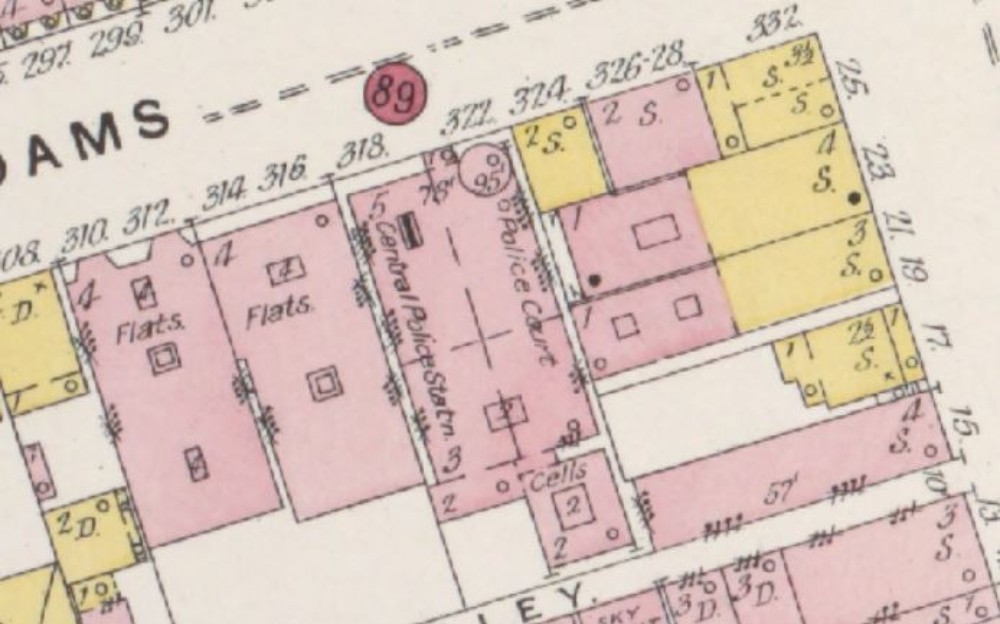
1887 map – New York Public Library
A Necessary Courthouse and Precinct House is Born
The opening of the Brooklyn Bridge turned downtown Brooklyn and its civic district into a hot part of town.
The Kings County Courthouse, Borough Hall, Municipal Building and Hall of Records were all in a row on Fulton Street, while hotels, taverns, shops and theaters stretched along Adams and Johnson streets, near Myrtle Avenue. The 1887 map shows all of the activity in this area.
A busy shopping district was being built along Fulton, and the city was discussing expanding the elevated train lines to accommodate all of the people crossing back and forth over the new bridge.
All of this activity meant more people and, unfortunately, more crime. The magistrate’s court, which handled less-serious crimes like public intoxication, prostitution, shoplifting, theft, fighting and the like, was inundated with defendants. There were not enough courtrooms, so they held court in the basement of City Hall.
The closest police precinct wasn’t close enough, so the city decided to build a new precinct house that would also house a magistrate’s court.
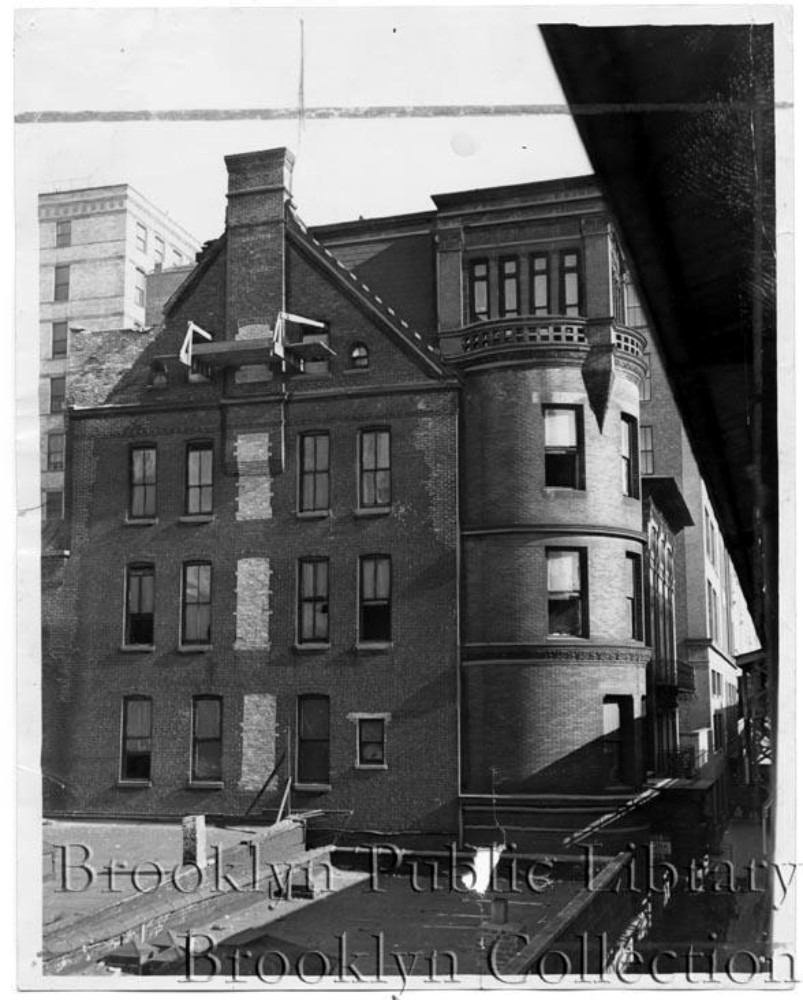
1935 photo – Brooklyn Public Library
This would solve the problem of new precincts and courts, and also streamline the process of bringing prisoners to court. No more riding in the “Black Maria” — they could simply be brought upstairs.
In 1884, the city of Brooklyn purchased two plots of land on Adams Street, near Myrtle, and proceeded to tear down the frame house on the site. An unnamed architect working with the Engineering Bureau of the Department of City Works designed the four-story brick precinct house with a courthouse and judge’s chambers on an upper floor.
The building was supposed to be ready in the spring of 1885, but being a city project it was way off schedule. There were many complaints in the Brooklyn Eagle from court officials and police brass, but finally, in the late summer, the building was done. Everyone moved in and began working.
The precinct that moved into the house was the 19th precinct of the Brooklyn Police Department. After the consolidation of the City of New York in 1898, the precinct was eventually renamed, and became the 149th Precinct, NYPD. The court was the 1st District Court.
The building was labeled state-of-the-art when it opened, but 30 years later, it was a mess. The 1904 map shows the growth of the neighborhood.
By the teens, the 149th Precinct was one of the busiest in the city. They still handled mostly petty street crime, but there was a lot of it. Their small jail was soon overcrowded. On weekends, they often had to send prisoners to other precincts.
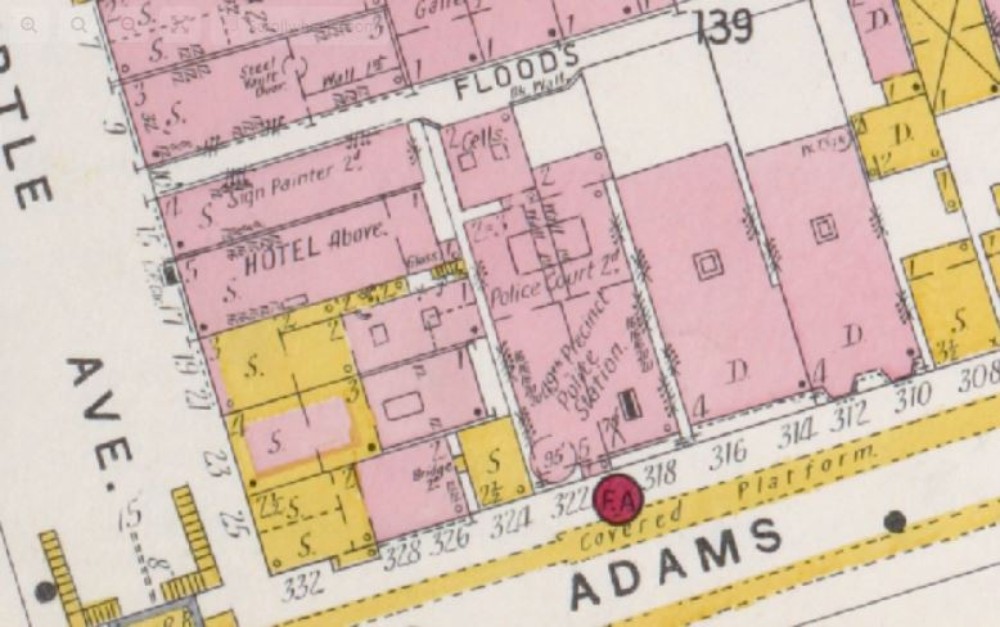
1904 map – New York Public Library
A Substandard Jail
By 1916 the precinct was the subject of a scathing report by inspectors. They noted that the jail was far too small and overcrowded, and had inadequate lighting and almost no natural light or ventilation. It was divided into a men’s section and a smaller women’s section.
Among the problems were toilets that didn’t flush, overcrowding and juveniles in the jail with no special protection for them from hardened criminals. The inspector recommended fixing what was broken and cutting new windows into the walls for light and ventilation.
But two years later, another inspector reported to the State Senate that nothing had been done; the crowded, dark and unsanitary conditions were even worse than before. His tour of the women’s cells revealed a woman sitting in a cell so dark that he couldn’t even see it in broad daylight.
His predecessor had noted that he thought the place should be closed down, and the 1918 inspector was even more adamant.
But the city did nothing until 1922, when the 149th Precinct left 318 Adams and moved to their new precinct house on Poplar Street in Brooklyn Heights. The precinct lines had been redrawn due to changes in population and need, and it was felt that more police were needed in that part of the Heights, which included the docks and factories.
The building was turned over to the courthouse, and remained a magistrate’s court until 1933. That year, the magistrate’s court, night court and women’s court were all moved to the new Central Courts Building at 120 Schermerhorn Street.
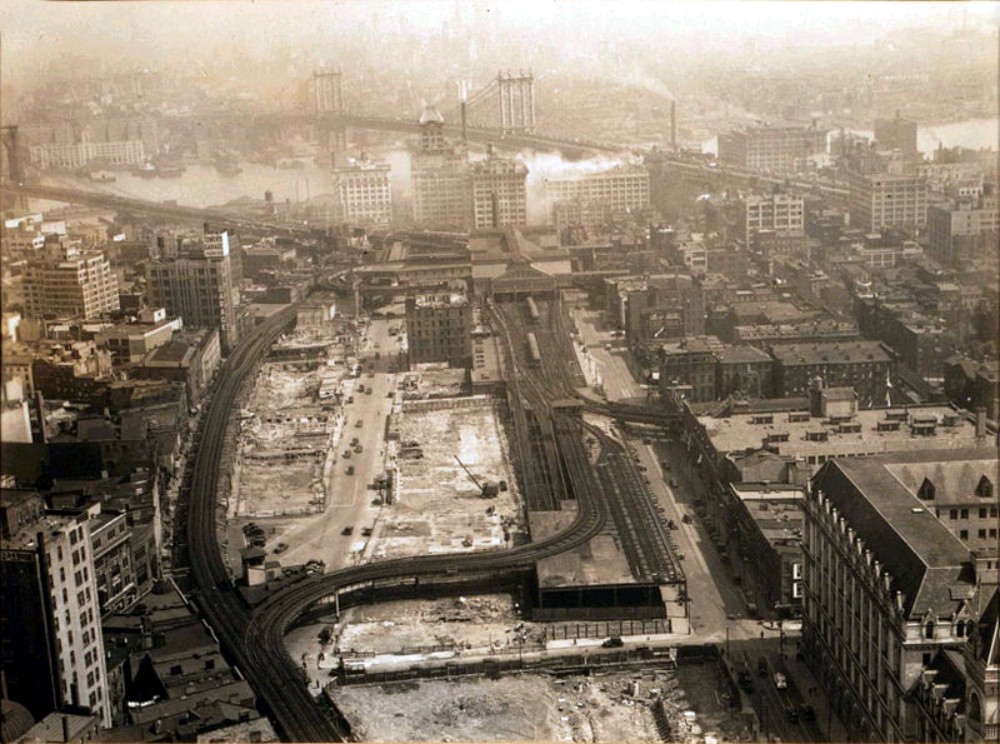
1936 photo. 318 Adams is just out of photo at bottom. Library of Congress via Wikipedia Commons
The End of an Era
The building was now empty. But in December of 1933, the women’s court was inexplicably moved back there, a move that was not popular with anyone. The building had been roundly condemned in the press as unfit and inadequate.
Press reports soon came out that the women prisoners were not being fed unless they could pay for their own meals. The courts soon changed their minds, and moved back to Schermerhorn.
In 1935, the city voted to widen the approach to the Brooklyn Bridge. Entire streets full of buildings were torn down between 1935 and 1936.
In 1939, the papers list 318 Adams as the headquarters of the Sanitation Department. They weren’t here very long.
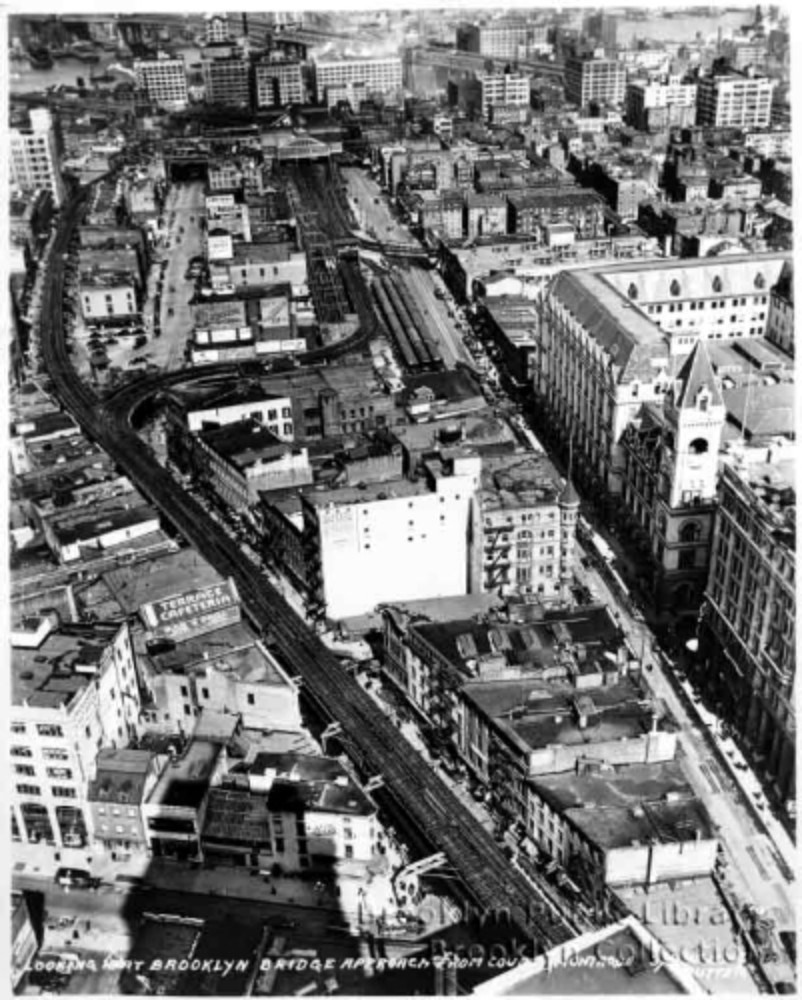
1935 photo – Brooklyn Public Library
By the early 1940s, the elevated tracks and the surface stations, such as the enormous Sand Street terminal, seen in the 1935 photo above, were torn down. The old precinct station can still be seen in the photo, as well. It’s the building with the corner tower and turret in the center of the page.
The entire area was torn down in the early 1950s for the Supreme Court Building, Cadman Plaza and the parks. The old 149th Precinct Station and Municipal Courthouse stood where the Supreme Court Building stands today.
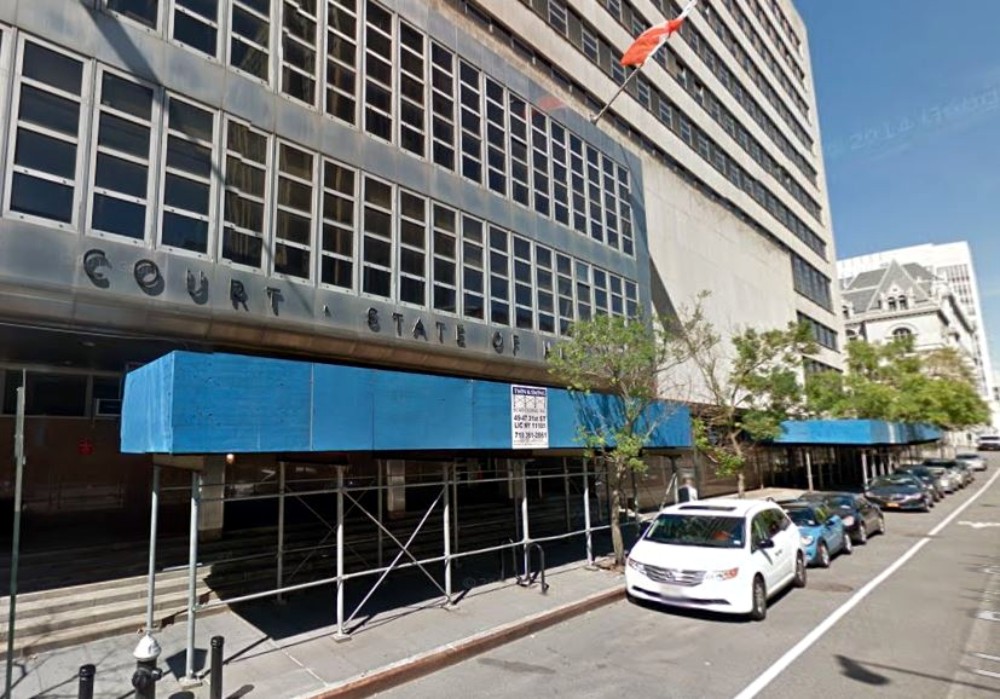
Google Maps
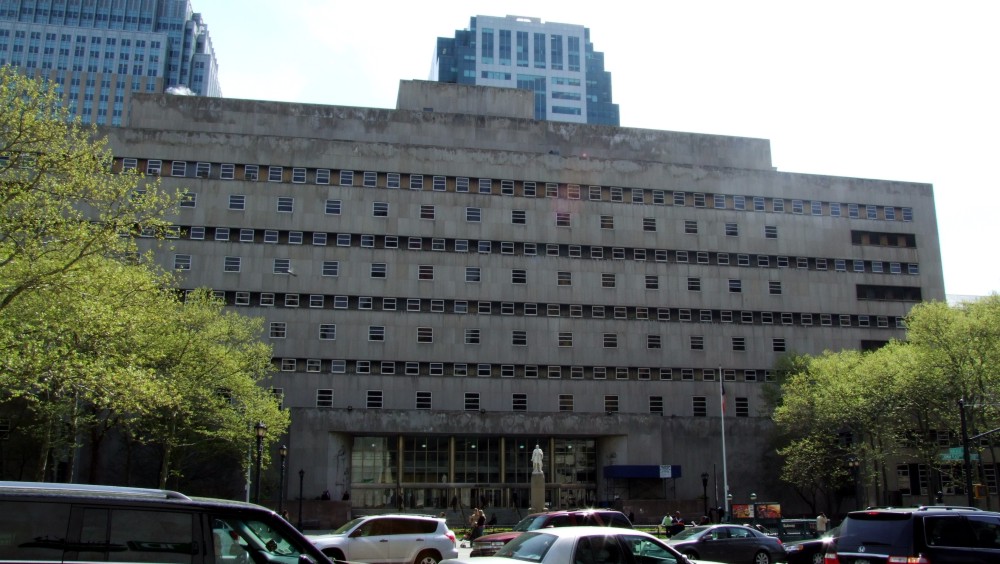
Photo – Suzanne Spellen

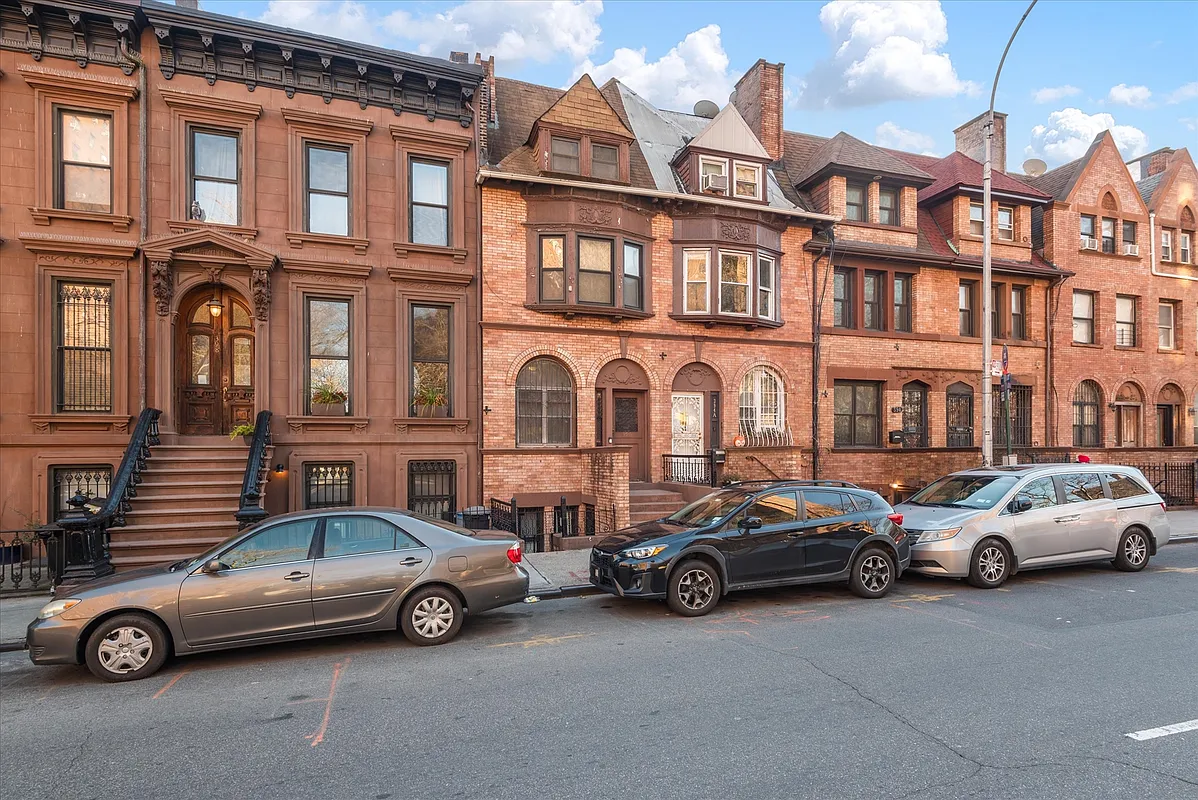
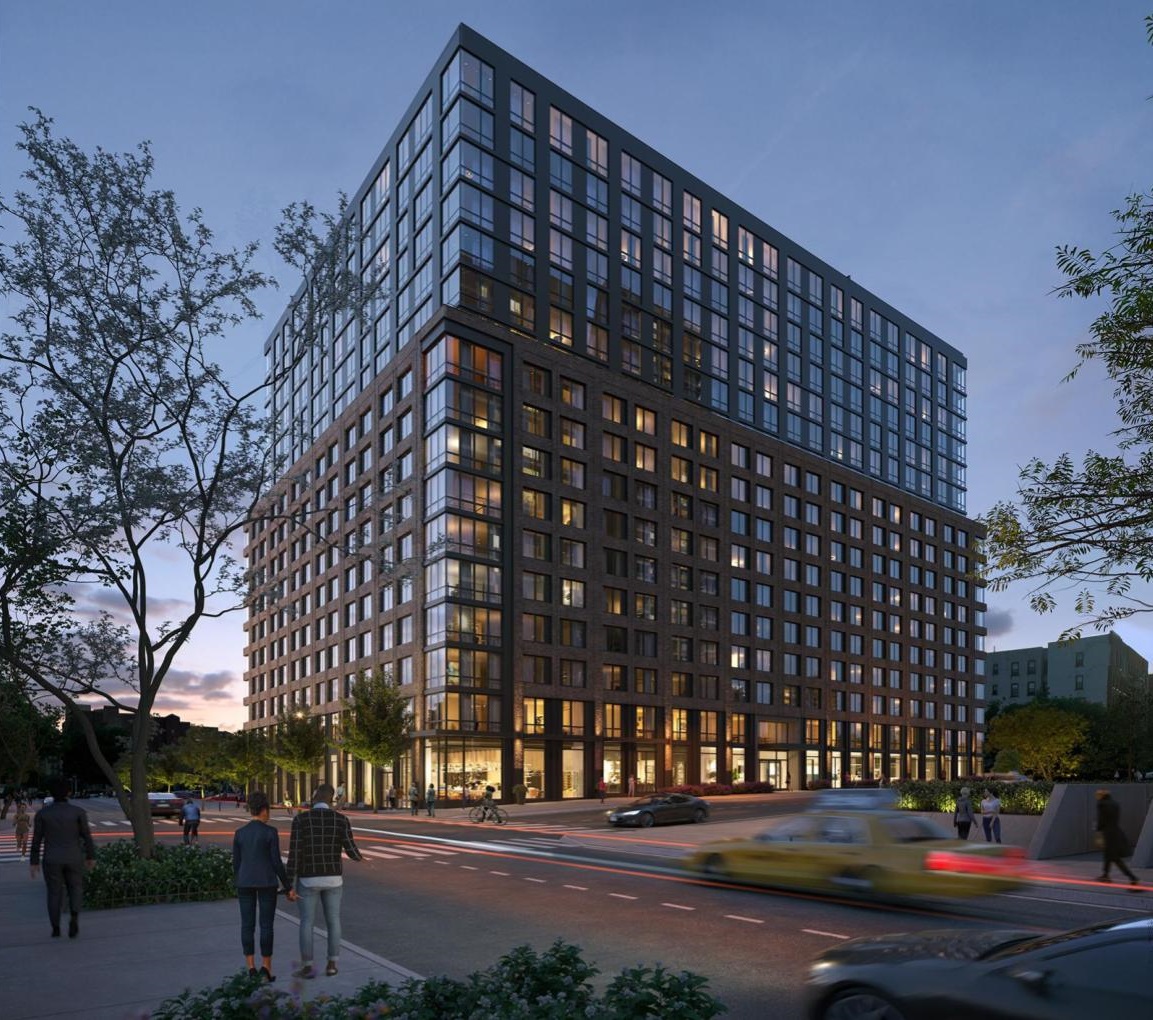
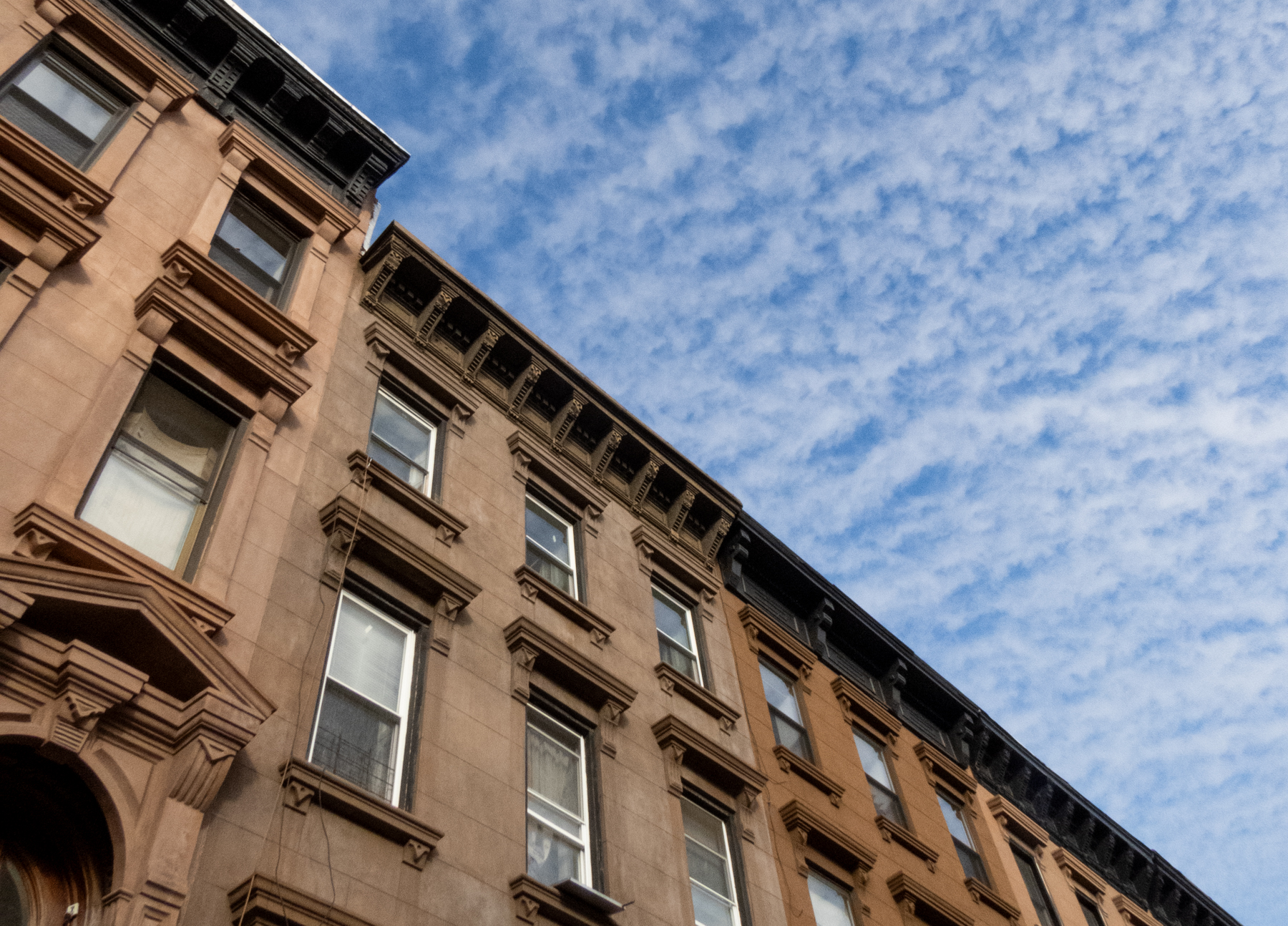





I’m fascinated at how the landscape has changed. There is no elevated line in the area, and Myrtle doesn’t even exist at Adams in that location. Where Myrtle would have been located is now Metrotech.
Jails had flush toilets a hundred years ago? Looxury! Oh wait, they didn’t flush.
Thanks for the post. Great content, wonderful pictures. Working near the current 1950s courthouse building, I had no idea there had once been beautiful architecture nearby. State Supreme Court is so ugly it makes one’s eyeballs bleed–even when it doesn’t have the perpetual scaffolding, a DofB favorite everywhere in downtown Brooklyn.